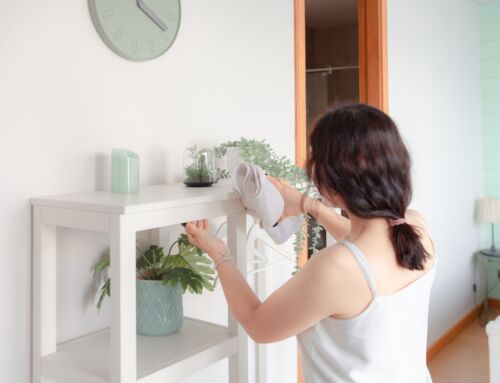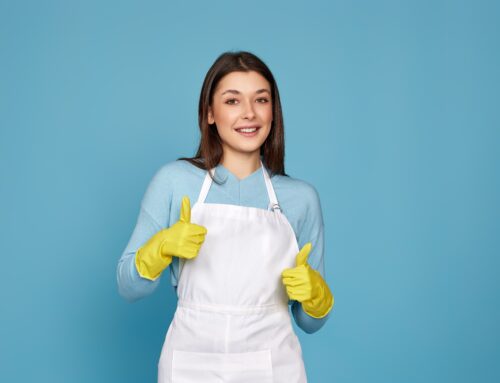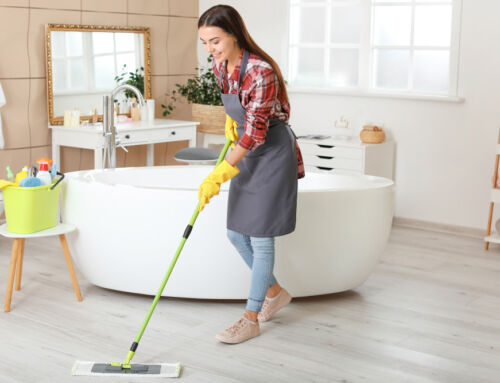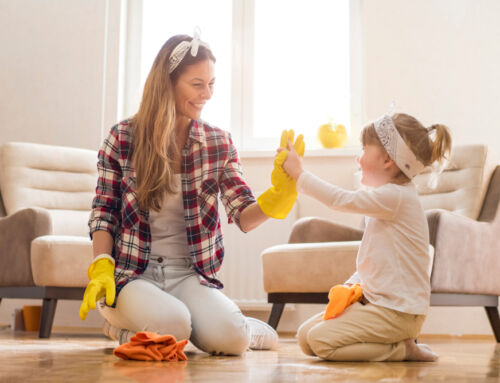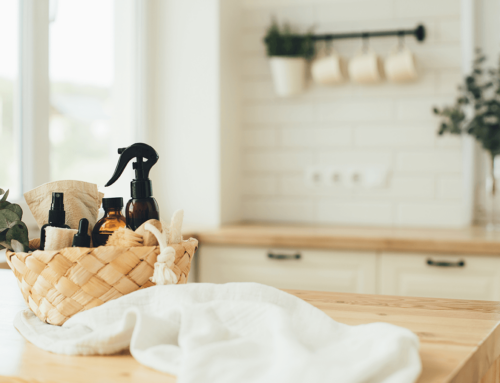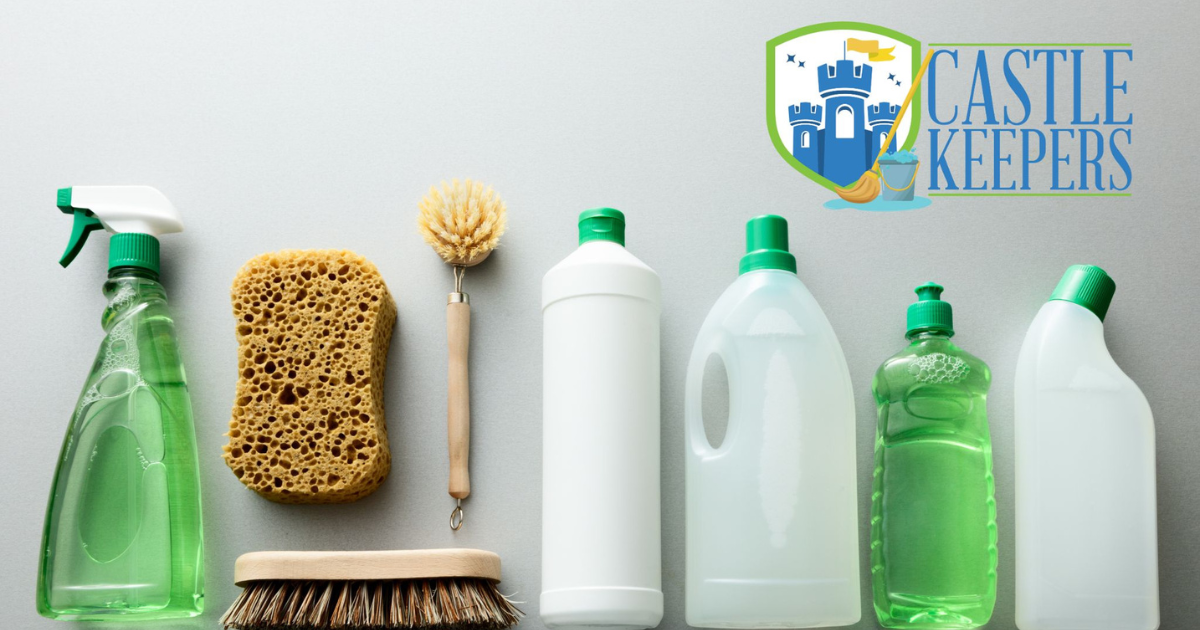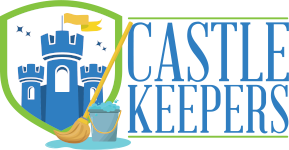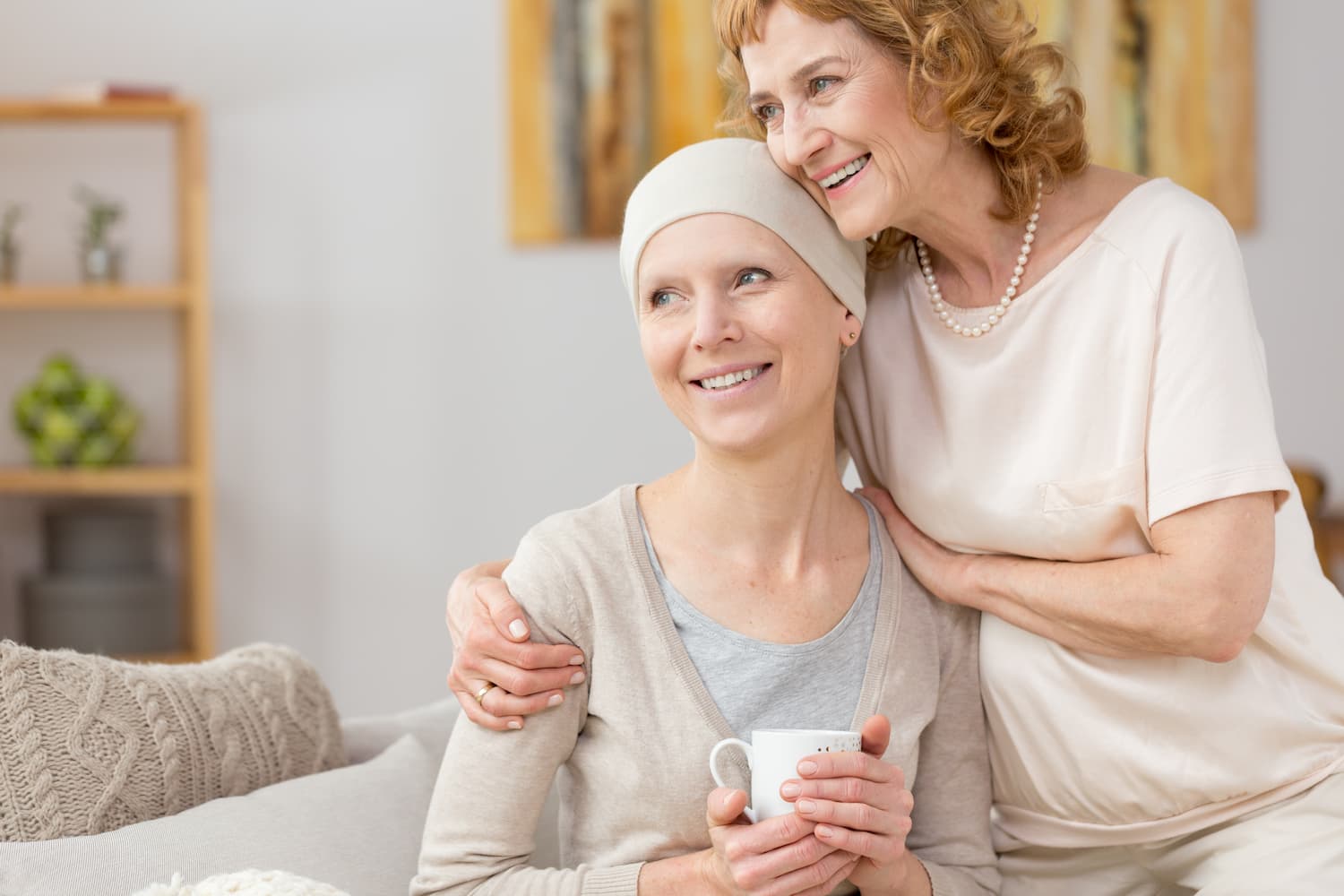
How Do You Clean for a Cancer Patient?
How do you clean for a cancer patient? This question came up recently at Castle Keepers House Cleaning and we were surprised by the lack of detailed advice on the web. Cleaning for a cancer patient is especially important because, since their immune system is suppressed due to the various medical procedures they are undergoing, infection control is the main objective. We should clean for health first and appearance second.
Good home hygiene includes the various tasks we perform to keep our homes clean, which goes a long way towards preventing the spread of infectious diseases. These procedures include handwashing, proper food storage, and cooking practices, good laundry practices, safe disposal of human and other waste, control of dust-borne allergens, care of pets, etc.
The important thing to remember is day-to-day cleaning practices are no different for cancer patients and those at increased risk of infection than for other family members. The difference is that if cleaning practices are not correctly carried out, the risk of infection is greater.
How to break the chain of infection?
Germs, both good and bad, are introduced continuously into the home by infected family members or visitors, contaminated food, pets, and sometimes in water or by air. There is a chain of events that results in the spread of infection from these sources to uninfected individuals in the home. Breaking this chain of infection is a key way to prevent the spread of germs and is achieved with good cleaning and hygiene practices.
The source of germs are, of course, people, pets, contaminated food, air, and water. By far the greatest method of spreading germs is the hands, hand and food contact surfaces, dirty cleaning cloths and other cleaning tools, and things that are shared. Methods of entry include the mouth, nose, eyes, or open wounds. Regarding susceptible people, everybody is at risk, but some people, like cancer patients, are more vulnerable to infection. This is why proper hygiene is one of the main chemotherapy precautions for families. Infection can be passed directly from person to person or through contact with equipment, surfaces, or unwashed hands.
The easiest way to break the chain of infection transmission is to prevent one link from occurring. Here’s how to stay safe:
- Keep infected people away from healthy people to isolate the germs.
- Be careful when disposing of pet waste.
- In the kitchen, take care when handling raw foods.
- Elsewhere in the house, handle diapers and soiled items with care.
- The method of exit is how the germs become available to spread – prevent any feces, vomit, or fluids from wounds, coughs, or sneezes from getting onto surfaces or hands.
What are special cleaning precautions for cancer patients?
If you are cleaning for a cancer patient, you can make the most impact with the method of breaking the chain of infection. In developing good hygiene for your home, you need to identify the major routes for the spread of germs. This suggests that the critical control point for breaking the chain of infection (for example, the places where hygiene is most important), is the hands. Think of the hands as the top point in a pyramid of critical control points.
The layer under the hands includes hand contact surfaces, food contact surfaces, and cleanliness and effectiveness of cleaning cloths and other cleaning tools. The layer under that includes clothing and household linens and toilets, baths, sinks, etc. The base of the pyramid includes floors, walls, furniture, etc.
Besides being fastidious about washing your hands and making sure all family members and visitors do the same, you should target high touch surfaces, including light switches, door knobs, cupboard knobs, TV remotes, computer keyboards, phones, handrails and faucet handles, toilet handles, etc. Here’s a list of high touch surfaces at home:
- Doorknobs
- Light switches
- Computer keyboards/mice
- Handrails
- Faucet handles
- Cupboard knobs
- TV remotes
- Phones
- Armrests(non-porous surfaces)
- Toilet handles
Next in importance are toilets, baths, sinks, wash basins, etc., then clothing and household linens. Floors, walls, and furniture hold the least risk of contamination and thus the least risk of transmission. By making and keeping the highest risk surfaces clean, we can significantly reduce the risk of the spread of infections. This approach to home hygiene has come to be known as “targeted hygiene.” The pyramid is just a general rule and can change depending on the circumstances of the illness.
How to clean scientifically?
The key here is that proper hygiene is not a once-a-week deep down clean – it needs to be an ongoing part of our daily lives where hygiene measures are directed at critical control touch points. Since the infectious dose for many common germs such as norovirus and rhinovirus (the “common cold”) can be very small, to break the chain of infection using a hygienic cleaning procedure that eliminates as many germs as possible from critical surfaces.
What is hygienic cleaning? It can be achieved in one of three ways:
- By detergent-based cleaning with rinsing
- By using a disinfectant/cleaner which kills germs with a multi-step process
- By dry steam vapor which inactivates the germs where they are.
In many situations, such as handwashing, a hygienically clean surface can be achieved with soap and water alone, but studies suggest this is only effective if accompanied by a thorough rinsing. Waterless hand sanitizers like alcohol wipes or gels are a last resort for situations where access to soap and water for handwashing is limited. Soaps and detergent products are an essential part of good hygiene in the home. Their function is to help remove dirt from hands and surfaces when we rub or scrub them so that it can be more easily rinsed away. If cleaning a surface is not done correctly, however, wiping it with a cloth and soap or all-purpose cleaner will merely move organisms around on a surface, onto the cleaning cloth and hands, and transfer soil to other surfaces. Cleaning cloths should be disposable or changed frequently and sanitized in the laundry. In situations where there is the presence of active infection (cold, flu, cMRSA, etc.), we need to use a disinfectant or dry steam vapor to remove germs from critical surfaces.
How do I disinfect my house for chemo?
A disinfectant is a product that kills microbes on surfaces. To disinfect, you must:
- Clean soil off the surface first (even if it doesn’t look dirty)
- Spray on the disinfectant
- Let it dwell the recommended amount of time to kill the microbes (usually three to 10 minutes depending on the disinfectant)
- Wipe with a clean cloth or rinse with fresh water
All these steps are not often taken together, since many people just like to spray and wipe, which basically just spreads the germs around. You can achieve disinfection of surfaces with dry steam vapor, with no detergents or disinfectant chemicals, in seconds rather than minutes.
How do you maintain cleanliness of tools?
Enough isn’t mentioned about keeping the cleaning equipment itself clean. Making sure vacuum bags are changed regularly can help keep allergens down in the house. Regularly washing and sanitizing toilet and scrub brushes is also important for infection control. Washing cleaning cloths in 140 degrees F (60 degrees C) water with a detergent and drying thoroughly will assure clean cloths to work with when you clean.
How do I green clean my house for chemo patients?
In general, people use a variety of substances to clean, including water, detergents, surfactants, solvents, enzymes, and antimicrobials. They help break down, contain, kill and remove soils and microbes. Cleaning without these agents is not very effective as each one has a specific job to do. To clean we must introduce them into our homes. When they’ve done their jobs, we no longer need them or want them around. If they are left behind they too become pollutants and are called “cleaning residue.” If our objective in cleaning is to remove unwanted substances from our home, not add to the pollution, we are not even in the ballpark.
Many people today believe that exposure to chemicals, in general, poses a risk to health. Whether we agree with them entirely or not, we should work to reduce the concentrations of all chemicals in our homes as much as possible and carefully select the best cleaning supplies for cancer patients. Disinfectants are pesticides and thus toxic, and many sensitive people, especially those with impaired immune systems, can’t tolerate these poisons in their homes on a regular basis.
How do you get rid of VOCs in your house?
A word is needed about volatile organic chemicals or VOCs. VOCs are gasses emitted from a variety of chemicals that may have short-and long-term health effects. Organic chemicals are used as ingredients in many household products, especially cleaning products. All these products release organic compounds into the air while you are using them and to a smaller degree even while they are stored.
The US EPA reports that while people are using products containing VOCs they can expose themselves and others to very high pollutant levels and elevated concentrations can persist in the air long after cleaning is completed. EPA studies also found levels of pollutants to be two to five times higher inside homes than outside. Adverse health effects include eye, nose, and throat irritation, headaches; loss of coordination, and nausea; damage to the liver, kidney, and central nervous system; and some cancers. For a full list of symptoms, please see epa.gov.
There are options if you want to totally avoid chemicals and their poisons and VOCs. The first and our favorite is the ADVAP Ladybug with TANCS Technology. The Ladybug has been proven to kill pathogens on surfaces in seven seconds, as opposed to longer times for other dry steam vapor systems (possibly causing heat damage to surfaces). It is recognized by the US EPA as a disinfecting device and is a one-step cleaning and disinfecting process. Best of all, no VOCs or cleaning residues are left after its use.
Aqueous ozone is created using air, water, and electricity to produce a cleaning, sanitizing, and deodorizing solution that is free of added fragrance and dyes. Ozone in the water has been used for over a century to disinfect and purify drinking water, wash fruits and vegetables, and sanitize food processing areas. Now it can be used to clean and sanitize your home. Tersano is recognized as a safe, sustainable alternative to traditional chemical cleaners and sanitizers.
Another option is electrolyzed water made from salt, water, and electricity to produce a sodium hydroxide cleaner and a chlorine sanitizer/disinfecting solution. Electrolyzed water does not exacerbate asthma, and since it is found naturally in the human body it is non-toxic to humans and pets, and non-irritating to the eyes, skin, and respiratory system. It is a great all-purpose cleaner plus sanitizer/disinfectant and has a degreaser option.
What are the benefits of microfiber cloths?
In the past decade, microfiber has become the cloth of choice for much of the cleaning industry. Made from synthetic materials, typically a polyester-nylon blend, microfiber is very fine, as much as 1/100th the diameter of a human hair, and highly absorbent, making it more effective than cotton at picking up and removing soil from surfaces.
What is the role of maid services or cleaning services?
While it’s true that proper hygiene is a daily thing, having a maid service clean for you will certainly help relieve the burden of housecleaning. Knowing what to look for in a cleaning service is very important. What types of chemicals do they use and are they non-toxic and low VOC? If they use homemade green cleaning options, what would they sanitize or disinfect? Do they clean their equipment? How and how often? When they clean your home, what exactly do they clean? Are they hitting the critical control touch points? Are they given enough cleaning cloths per house to change cleaning cloths often? Do they use good infection control practices? Will they refrain from sending you any sick employees?
Healthcare workers are familiar with Standard Precautions, a set of infection control practices designed to prevent transmission of diseases that can be acquired by contact with blood, body fluids, open skin, and mucous membranes. These precautions are intended to protect both the patient and the caregiver. Cleaning Technicians should take a lesson from Standard Precautions and wear gloves and where appropriate, goggles, when cleaning, especially in kitchens and bathrooms. Cleaning Technicians should also expect to wear masks in certain situations when asked. Even if they think they are not ill, if it is in the best interest of the cancer patient, they should do it.
What cleaning company applies meticulous cleaning procedures?
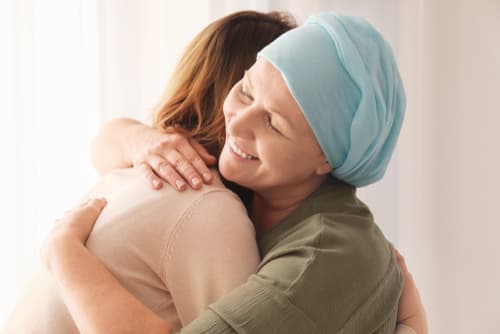
We’re here to provide expert answers to any of your questions, like how to clean with a magic eraser and how to get rid of stains after your Halloween party. We’re also available for effortless scheduling. Contact us today!
Share this article
A quick overview of the topics covered in this article.

